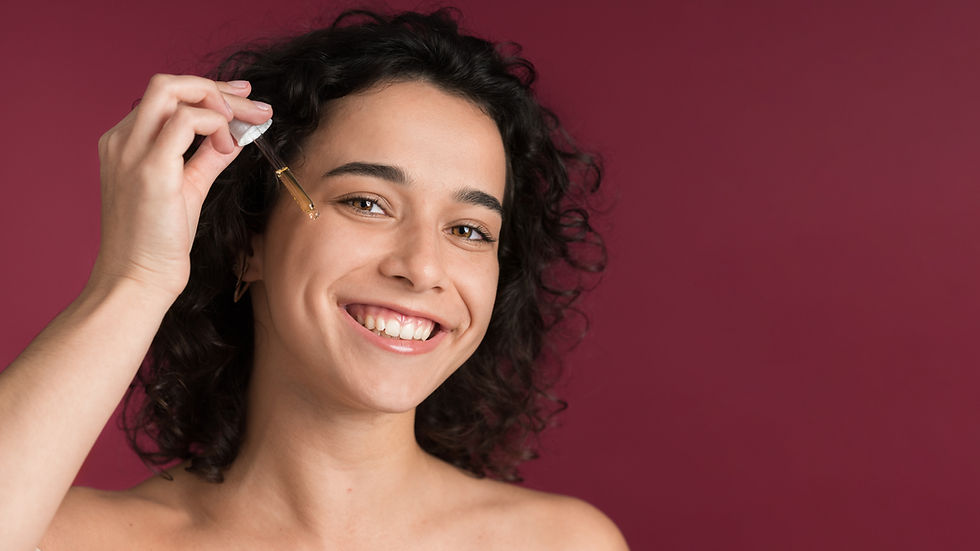Know About Rejuvenating Skin Cream And How Does It Work?
- The Beauty Sailor

- Jul 29, 2022
- 3 min read
Updated: Apr 19, 2023

Everybody wants fresh and youthful skin, but what is ‘fresh’ skin? Fresh skin only means that the top most layer of your skin is as fresh as it can be - devoid of dead skin, blackheads, and signs of aging. But is it possible at all times? Signs of aging like wrinkles and fine lines, impurities like blackheads, acne and clogged pores seem to come and go anytime they like. The answer is rejuvenation! Skin rejuvenation means the regeneration of new skin cells that form a layer which collectively make the skin you see. Faster regeneration means faster shedding of old layers of skin which hold tanning, blackheads and dead skin cells. As a result, you have fresher, rejuvenated and youthful-looking skin. To understand it further, let’s understand our skin and make our skincare routine logical and make good choices while buying face care products like Anti Aging Rejuvenating Skin Cream.
Basics Of Skincare - The Formation And Biology Of Our Skin
Our skin is only a few millimeters thick at its thickest point. However, it remains our heaviest and largest organ, accounting for roughly one-seventh of our total body weight: It weighs between 3.5 and 10 kilos (7.5 and 22 pounds) and has a surface area of 1.5 to 2 square meters, depending on your height and body mass. This demonstrates the importance of skin to your body and metabolism.

For the skincare enthusiasts, the glow or dullness you see in your skin is a concern of the outermost layer of the skin which can be rejuvenated. The epidermis refers to the visible outermost layer of the skin. It mainly comprises cells that produce the keratin protein, called keratinocytes. Newer cells gradually push these cells to the surface of the skin, where they harden and finally die. The hardened keratinocytes (corneocytes) compact together tightly and seal the skin from the outside world.
What Is Skin Elasticity And Stretch Marks?
Under the epidermis, the middle layer of skin is firmly attached to it and is called the dermis. It is made up of a dense network of tough, elastic collagen fibers. These cells give our skin the structure, strength and elasticity it has. At times, the skin is stretched a lot (say, during pregnancy a woman’s belly size increases) which causes the dermis to tear. The torn dermis is visible and the gaps appear as lines of lighter shade, commonly known as stretch marks.

The epidermis is continually renewing itself: new cells are formed in the epidermis' lower layers. Within four weeks, these will float to the surface. When the skin is rubbed, this continual renewal acts to replace the cells that are lost and fall to the ground as little flakes of skin. In reaction to pressure or rubbing, epidermal cells proliferate quicker. However, the amount of skin flakes shed remains constant. As a result, the layer of hardened skin on the surface thickens over time, becoming a callus. This is done by the skin to defend itself from pressure and rubbing. Skin rejuvenation is the process of forming new skin cells and layer formation.
The Skin Cycle -The Reason Behind Exfoliation And Skincare
A skin cycle is the process by which a new skin cell is generated at the epidermis's lowest layer and makes its way up to the skin's surface. Faster regeneration means faster surfacing of new skin cells and rapid depletion of old layers that hold all the dullness. The prime reason behind exfoliating and doing skincare is to accelerate this natural process and enhance our skin’s looks.
However, overdoing skin care can cause harm to the skin as well. This can deplete skin layers and make your skin thinner. Thin skin is not able to provide enough defense which is the primary function of skin. So it is advised to use natural skincare products. Bakuchi oil anti aging creams, shea butter face care products or Vitamin E natural skin care products are helpful to take care of skin rejuvenation and give your skin only the needed amount of rejuvenation.








Comments